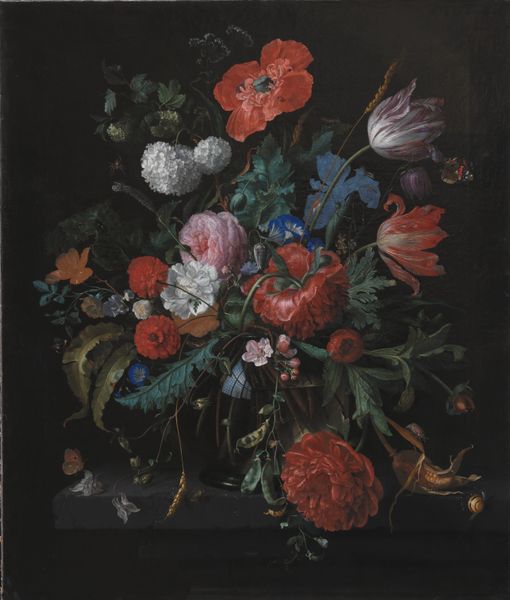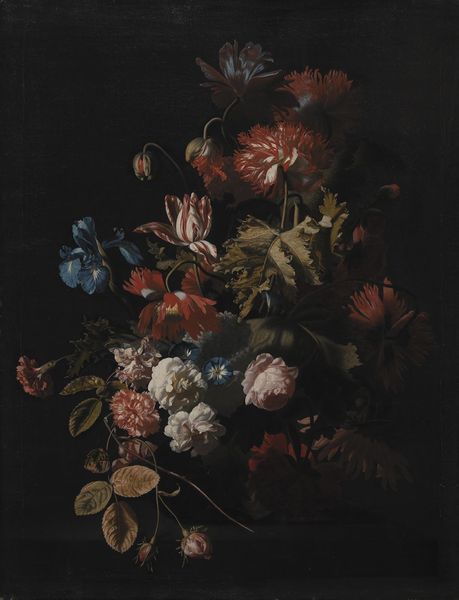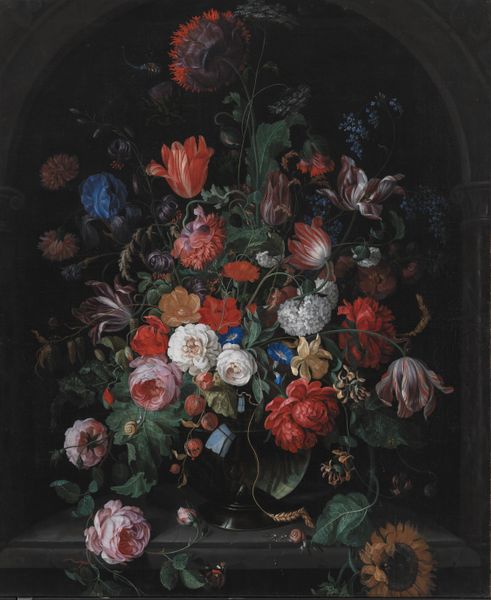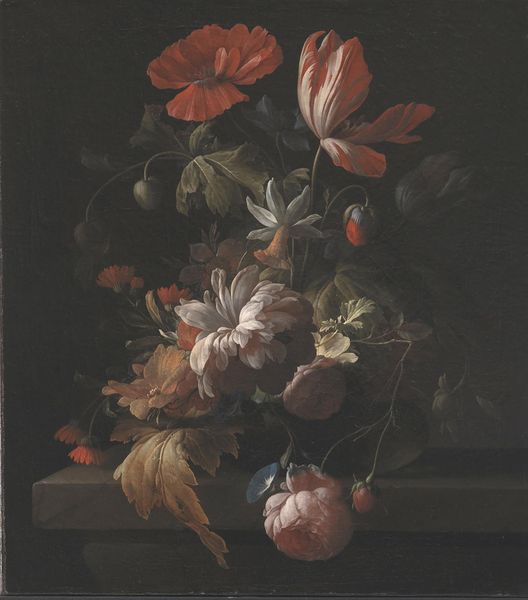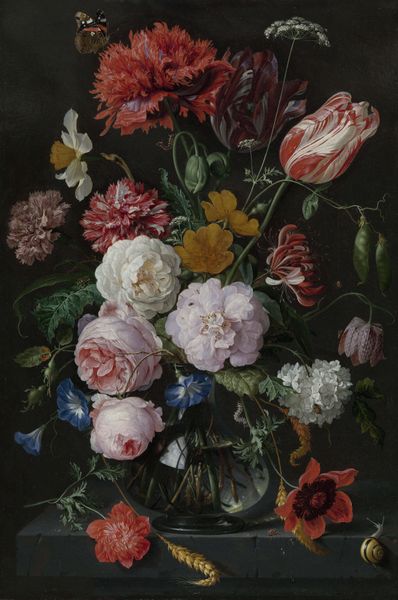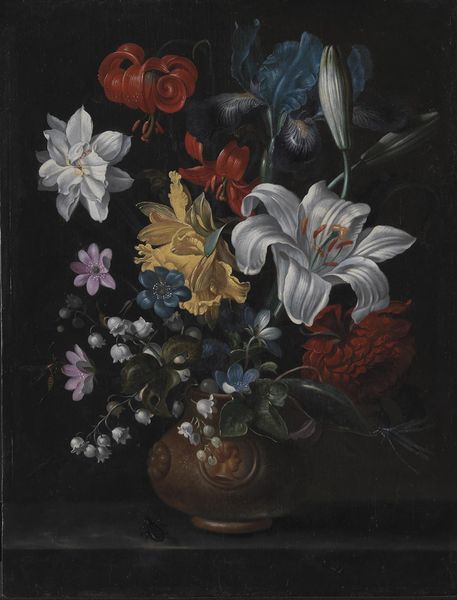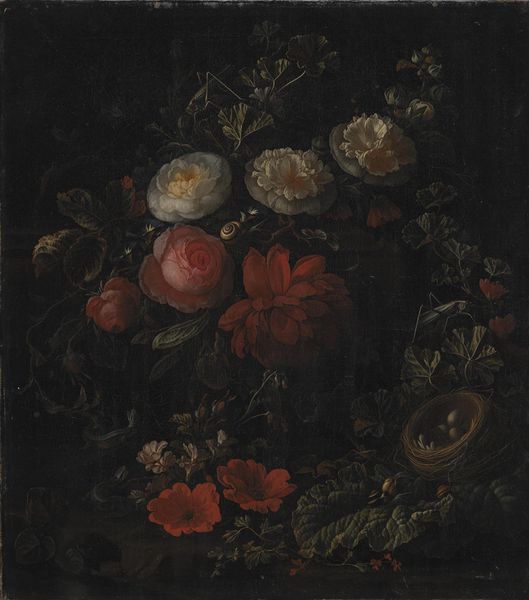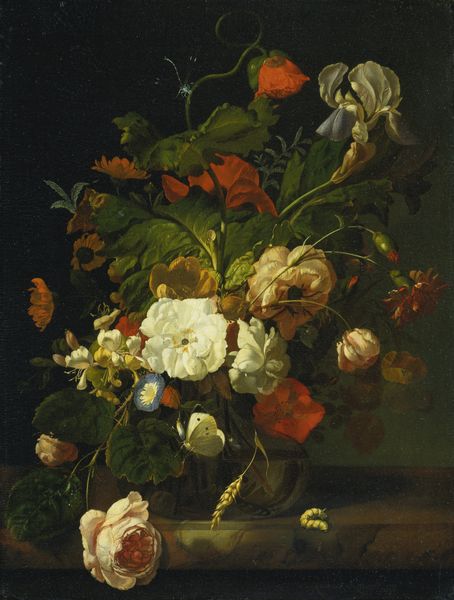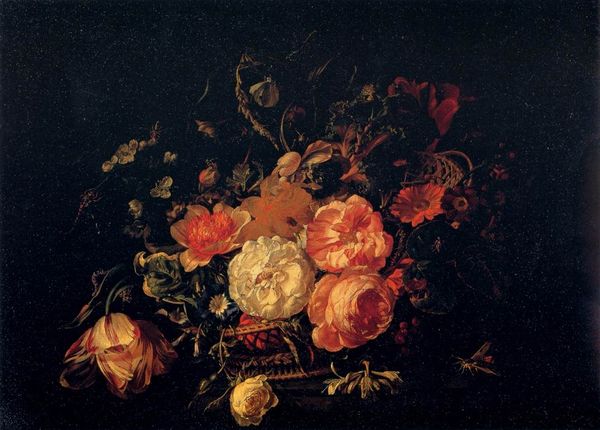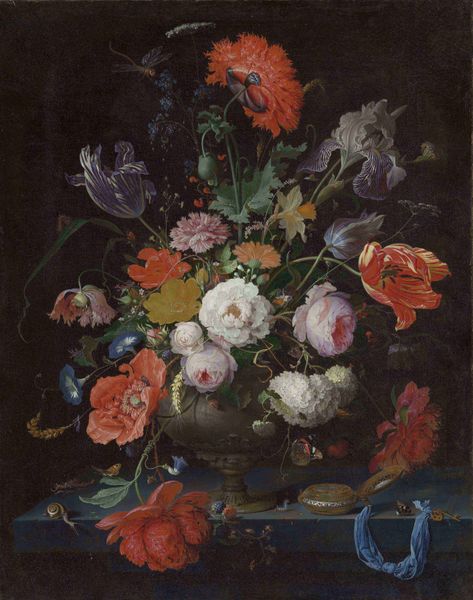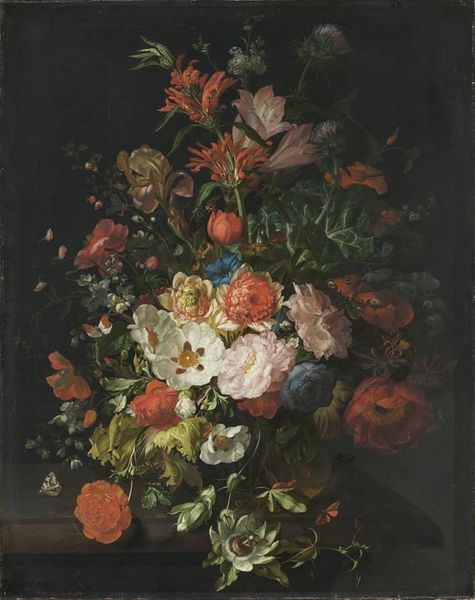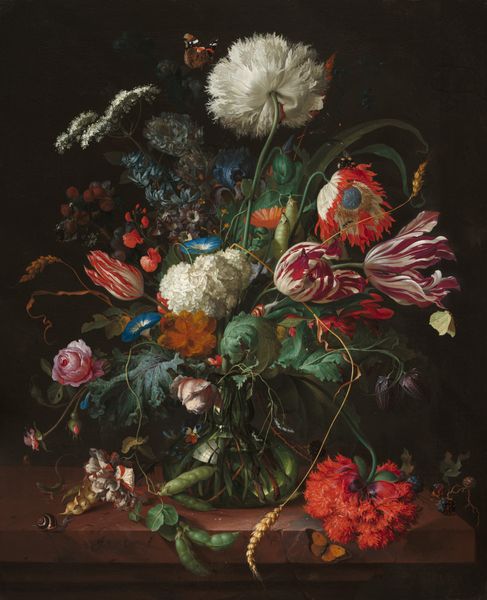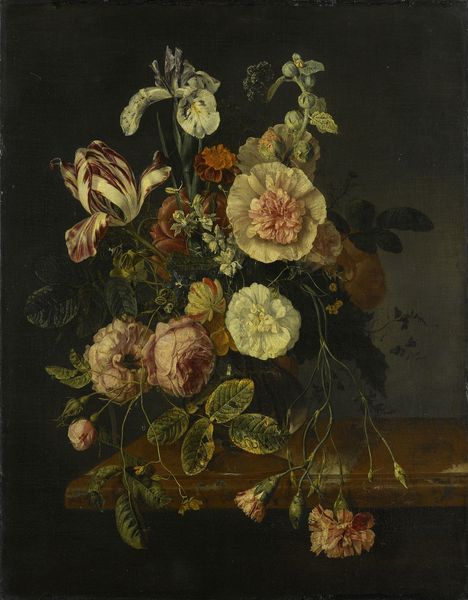
painting, oil-paint, wood
#
baroque
#
painting
#
oil-paint
#
wood
Dimensions: 41 cm (height) x 54.5 cm (width) (Netto), 59.3 cm (height) x 73 cm (width) x 5 cm (depth) (Brutto)
Abraham Mignon painted this Garland of Flowers on canvas sometime in the 17th century. It's a classic example of Dutch flower painting, but looking closely, we can see more than just a pretty picture. These still lifes emerged in a period of increasing trade and scientific discovery in the Netherlands. The detailed observation of nature, displayed here in Mignon's meticulous rendering of each petal and stem, mirrors the growth of natural history as a discipline. The presence of certain flowers also reflects Dutch global trade networks. The garland format itself might remind us of religious iconography, but here, nature itself is the object of reverence. The painting invites us to consider the status of the artist as someone whose close study of nature is evidence of a rational and improving society. Historians use a range of resources to study such paintings, including archival records of artists' sales, botanical treatises, and studies of trade routes. These can help us understand how art both reflected and shaped the values of its time.
Comments
No comments
Be the first to comment and join the conversation on the ultimate creative platform.
